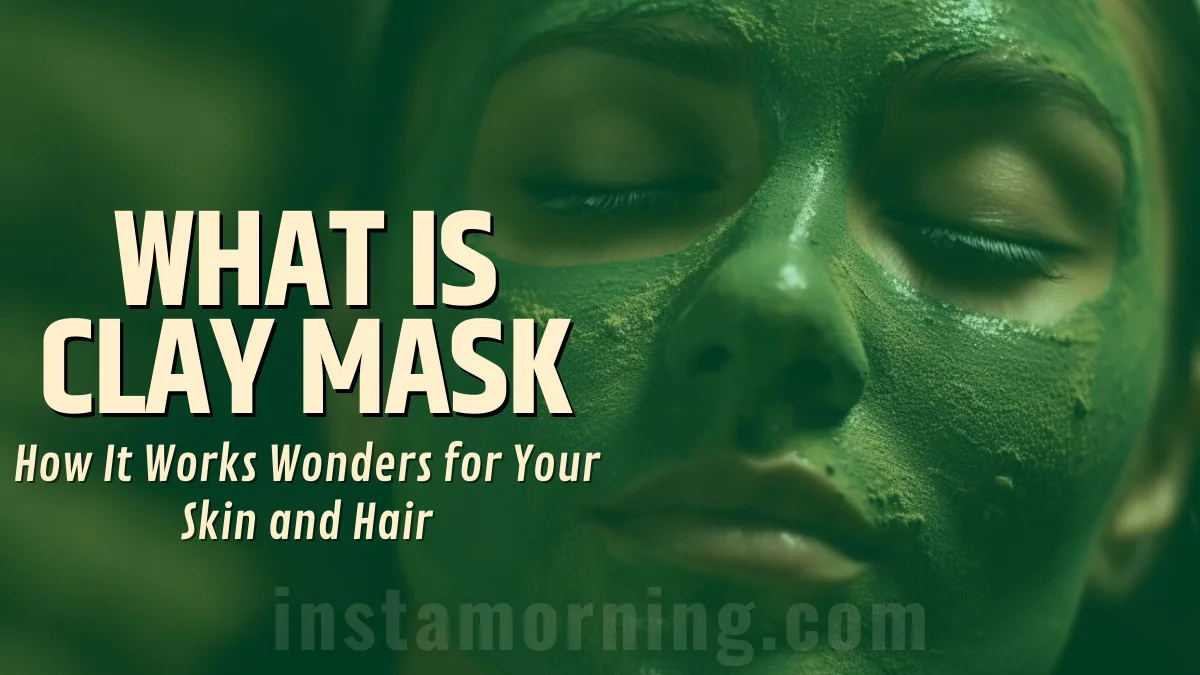What Is Clay Mask? Benefits, Types and How to Achieve Glowing Skin!
This article explores the benefits and uses of clay masks for both skin and hair. Discover how different types of clay—like bentonite, kaolin, and rhassoul—can help with oil control, pore cleansing, exfoliation, and hydration.
Learn how to choose the right clay mask for your skin type, proper application techniques, and DIY recipes for customized masks. Whether you’re aiming for clearer skin or a refreshed scalp, this guide has everything you need for glowing results.
What is Clay Mask?
A clay mask is a skincare product made from different types of clay that are believed to have beneficial properties for the skin. People have used clay for centuries to improve skin health and treat various skin conditions.
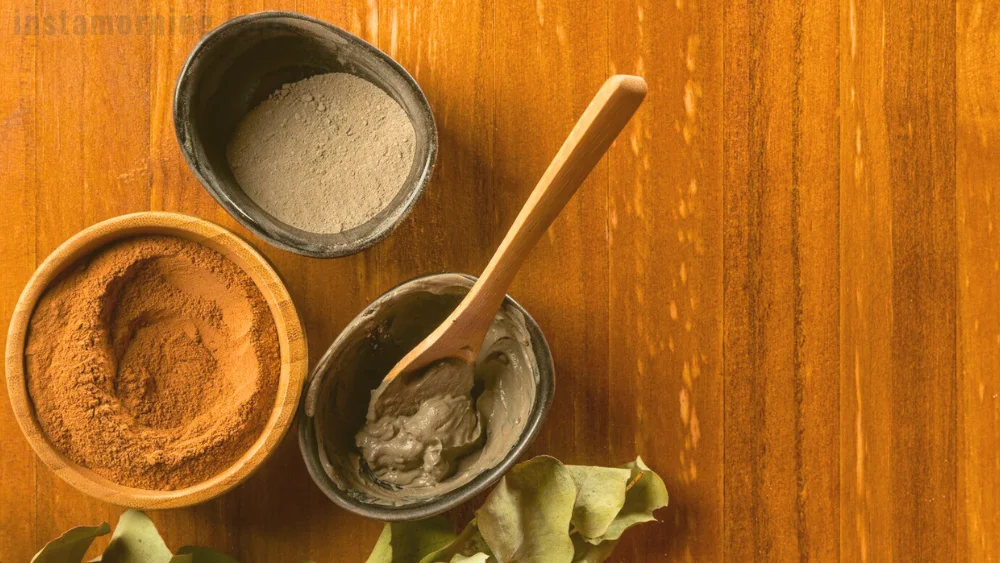
Clay masks are typically applied to the face, where they absorb excess oil, cleanse pores and remove impurities. These masks work by drawing out dirt, bacteria and toxins from the skin, which can help in reducing acne and brightening the complexion.
Clay masks are popular for people with oily or acne-prone skin, but they can also be beneficial for sensitive, dry or combination skin types when used correctly. Depending on the type of clay, they may also promote skin tightening and exfoliation.
What Are the Benefits of Clay Mask?
The benefits of clay masks extend across a wide range of skin and hair concerns. Below are the major advantages of using clay masks:

1. Pore Cleansing and Oil Control
Clay masks help to absorb excess oil and unclog pores, making them particularly effective for people with oily or acne-prone skin. By removing trapped dirt and sebum, clay masks can help prevent blackheads and whiteheads.
2. Exfoliation and Dead Skin Removal
Clay masks can gently exfoliate the skin, removing dead skin cells and promoting a smoother texture. This exfoliation helps in skin brightening, giving a refreshed and revitalized appearance.
3. Detoxification and Drawing Out Impurities
Clay masks can bind to toxins and environmental pollutants, helping to detoxify the skin. The negative charge of certain clays attracts positively charged toxins, making them effective at deep cleansing.
4. Acne Treatment and Blackhead Removal
Clay masks can reduce the occurrence of acne by removing excess oil and impurities. They may also help reduce inflammation and calm irritated skin, which is beneficial for managing breakouts.
5. Skin Tightening and Firmness
When clay masks dry, they create a temporary tightening effect on the skin, which may help reduce the appearance of large pores and fine lines.
6. Moisture Retention for Dry Skin
Some types of clay, like red clay, can help retain moisture and improve skin hydration. This makes them ideal for people with dry or sensitive skin.
7. Soothing and Calming Skin
Certain clays, such as kaolin clay, are gentle enough to soothe irritated or sensitive skin. They can also help with conditions like dermatitis and eczema.
8. Improved Blood Circulation
Clay masks may promote better blood flow to the skin’s surface, which can aid in wound healing and enhance overall skin tone.
Clay Mask for Face
Clay Mask for Oily Skin
Clay masks are highly effective for managing oily skin because they absorb excess sebum and reduce shine. Green clay and bentonite clay are particularly recommended for those with oily skin.
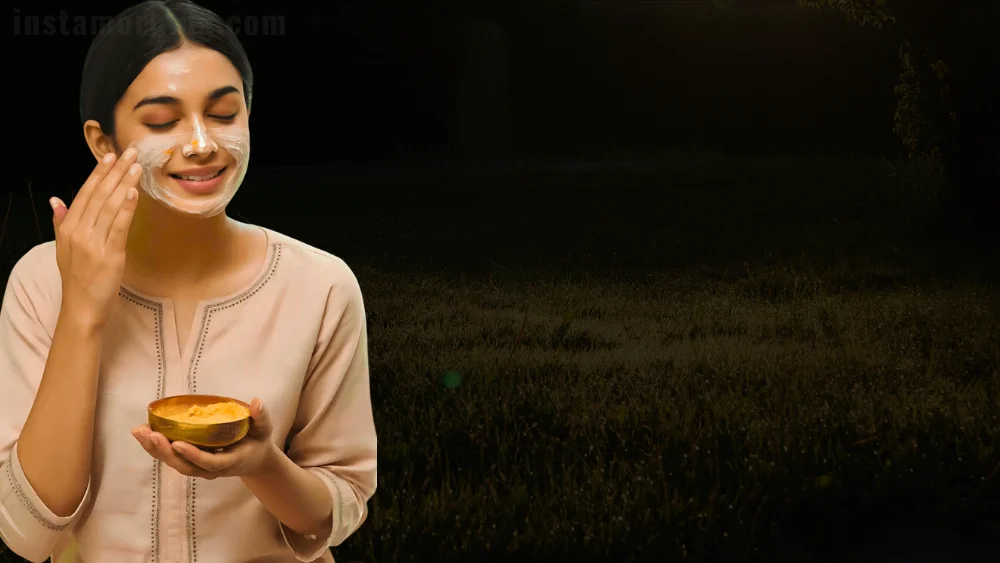
Clay Mask for Pores
One of the primary benefits of clay masks is their ability to cleanse and tighten pores. By removing debris and impurities, clay masks can minimize the appearance of enlarged pores and help maintain clear skin.
Clay Mask for Dry Skin
While clay masks are often associated with oil control, they can also benefit dry skin. Red clay and kaolin clay are gentle options that can help retain moisture without over-drying the skin. Using a moisturizing clay mask no more than once per week can help maintain a healthy balance.
Acne-Prone Skin
Clay masks help manage acne by absorbing oil and unclogging pores. They may also reduce inflammation and redness associated with acne. Bentonite and French green clay are particularly effective for acne-prone skin.
Sensitive Skin
For those with sensitive skin, kaolin clay is a gentle option that can provide light exfoliation and oil absorption without causing irritation.
Also Read —
Benefits of Fully Green Tomato Clay Mask Cleanser for Acne Prone Skin
What Is Body Butter? Are Body Butters Better Than Lotions?
Clay Mask for Hair
Clay masks can also be used as treatments for the scalp and hair. They are especially beneficial for oily scalps and hair because they absorb excess oil and cleanse the scalp.
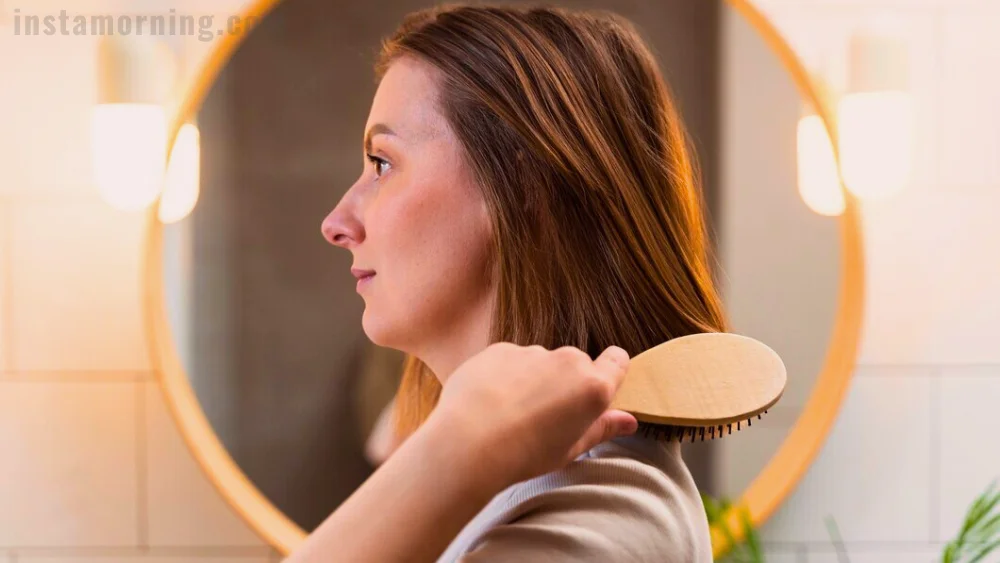
Application for Hair
To apply a clay hair mask, spread an even amount of the mask across your scalp and hair, letting it sit for about 5 to 10 minutes before rinsing with warm water. This process helps remove dirt and oil, leaving the hair feeling clean and refreshed.
Benefits for Hair
- Dandruff Control: Clay masks can help manage dandruff by absorbing oil and soothing the scalp.
- Frizziness Reduction: The minerals in clay masks can help smooth frizzy hair.
- Improved Hair Texture: By detoxifying the scalp, clay masks may improve overall hair texture and add volume.
Types of Clay Mask
There are several types of clay masks, each offering unique benefits:
1. Kaolin Clay
Kaolin clay, also known as China clay, is a gentle clay ideal for sensitive skin. It comes in various colours, including white, red and yellow. Kaolin clay helps absorb oil, lightly exfoliates and may promote blood circulation.
2. Bentonite Clay
Bentonite clay, derived from volcanic ash, is highly absorbent and ideal for oily or acne-prone skin. It can tighten skin and remove impurities effectively. Bentonite is often used for its detoxifying properties.
3. French Green Clay
French green clay gets its color from decomposed plant matter. It is known for its exfoliating properties and ability to draw out impurities from the skin. It may also improve blood circulation.
4. Rhassoul Clay
Rhassoul clay, also known as Moroccan clay, is rich in minerals like magnesium and potassium. It is used to cleanse and detoxify both skin and hair. The Rhassoul clay mask is particularly popular for its exfoliating and conditioning properties.
5. Fuller’s Earth Clay
Fuller’s earth clay is one of the most powerful absorbing clays, making it best for oily skin. It is known for its ability to deeply cleanse and brighten skin but should be used with caution on sensitive skin.
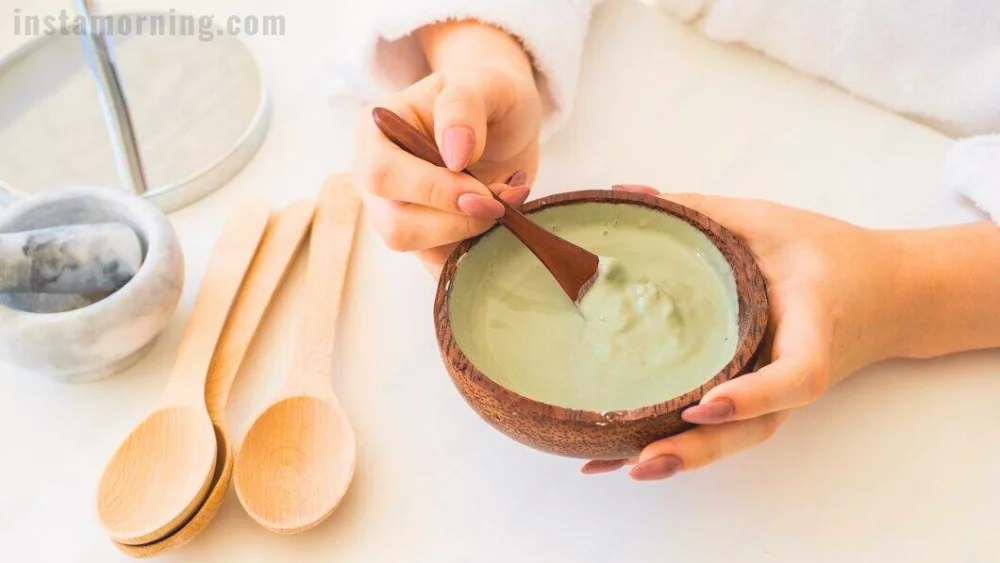
Clay Mask Application
Proper application and removal of a clay mask are essential for maximizing its benefits without irritating the skin.
How to Use a Clay Mask
- Cleanse: Wash your face with a gentle cleanser and pat dry.
- Application: Apply a thin, even layer of clay across your face or scalp, avoiding the eyes, nostrils and mouth.
- Timing: Leave the mask on for about 10-15 minutes or until it starts to dry and tighten.
- Removal: Rinse with lukewarm water or use a damp cloth to remove the mask gently.
- Moisturize: Follow with a moisturizer to lock in hydration.
Frequency of Use
For oily skin, clay masks can be used once or twice a week. For dry or sensitive skin, limit usage to once per week to avoid over-drying.
DIY Clay Mask at Home
To create a DIY clay mask at home, mix clay powder with water or other natural ingredients like aloe vera, honey or tea tree oil for added benefits. Ensure the mixture has a smooth, spreadable consistency before application.
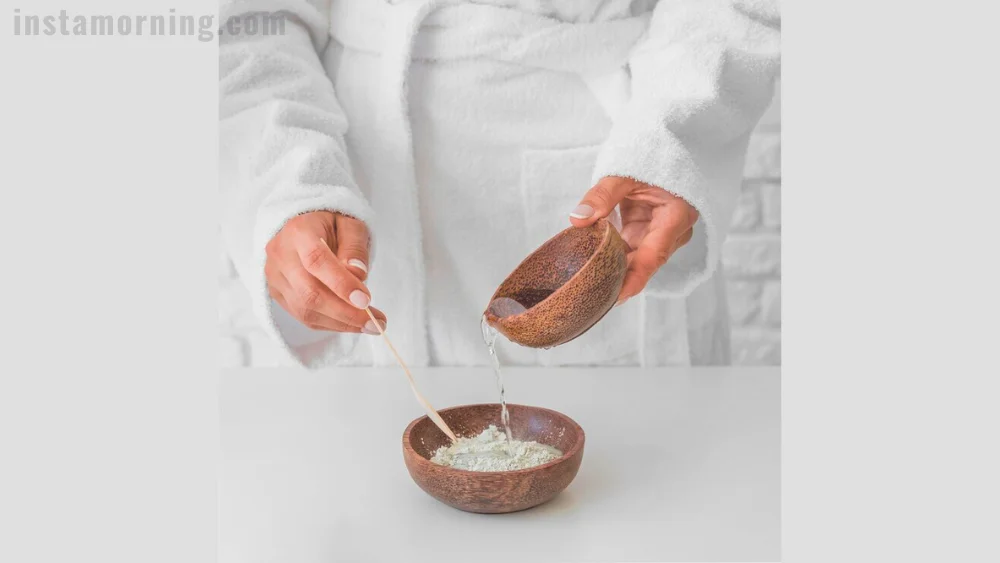
Potential Side Effects and Precautions
While clay masks are generally safe, overuse can lead to dryness, irritation or redness. Conduct a patch test before applying a new clay mask to ensure it doesn’t cause an allergic reaction.
Final Words
So, now you know the answer to what is clay mask. Clay masks have been used for ages to improve skin and hair health. From absorbing excess oil to detoxifying and exfoliating, clay mask benefits are numerous. With various clay mask types available—from bentonite to kaolin to rhassoul—you can choose the best option for your skin type and concerns.
Whether you’re using a clay mask for oily skin, dry skin or acne-prone skin, incorporating this beauty product into your skincare routine can help promote clear, glowing and revitalized skin.
Frequently Asked Questions (FAQs)
How to use clay mask?
To use a clay mask, cleanse your face and pat it dry. Apply a thin, even layer, avoiding the eyes and mouth. Let it dry for 10-15 minutes, then rinse with lukewarm water and pat dry.
What does clay mask do?
A clay mask absorbs excess oil, removes impurities, unclogs pores, and exfoliates dead skin cells. It helps tighten and brighten the skin, controls breakouts, and promotes a smoother, clearer, and more balanced complexion.
How to apply clay mask?
Cleanse your face, pat it dry, and use clean fingers or a brush to apply an even layer of the clay mask. Avoid sensitive areas like the eyes and lips. Leave it on until dry, then rinse thoroughly.
How often to use clay mask?
Use a clay mask once or twice a week, depending on your skin type and concerns. For oily or acne-prone skin, more frequent use may help. Overusing may lead to dryness or irritation.
Can clay mask be used every day?
Using a clay mask daily is not recommended. Daily use can strip your skin of essential moisture, leading to dryness or irritation. Stick to once or twice a week for best results and balanced skin.
Are clay masks good for blackheads?
Yes, clay masks help with blackheads by drawing out impurities, dirt, and excess oil from pores. They help unclog and tighten pores, reducing blackhead formation and promoting smoother, clearer skin.
Are clay masks supposed to burn?
Clay masks should not burn. A slight tingling sensation is normal, but burning indicates irritation or sensitivity. If burning occurs, remove the mask immediately, rinse with water, and avoid using it again.
Can clay mask remove tan?
Clay masks can help reduce the appearance of tan by gently exfoliating dead skin cells and promoting skin renewal. While they won’t completely remove a tan, regular use may help even out skin tone over time.

